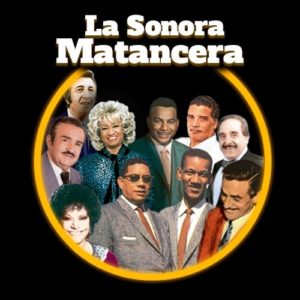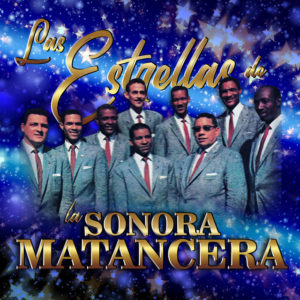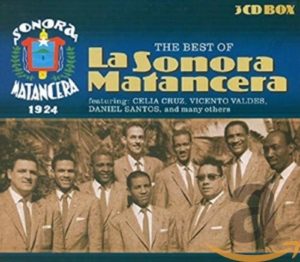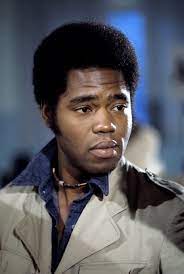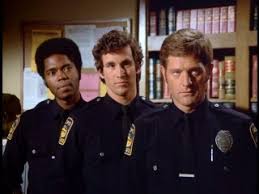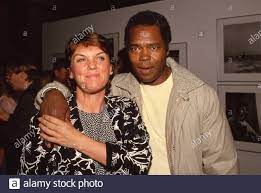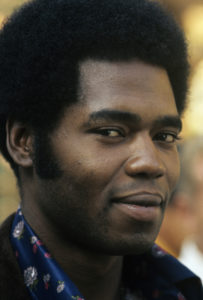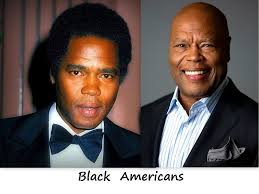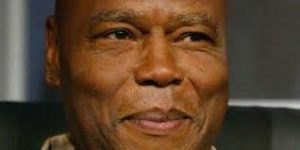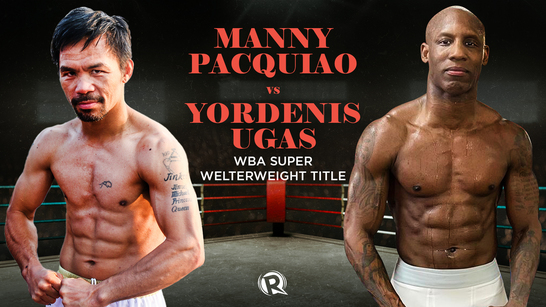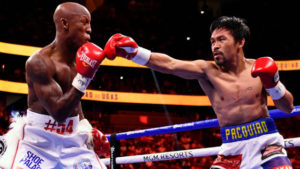LA SONORA MATANCERA, LA GRAN INTERPRETE DE MUSICA RUMBERA CUBANA. VIDEOS
La Sonora Matancera tuvo un origen humilde en la ciudad de Matanzas el sábado 12 de enero de 1924. El fundador de la Sonora fue el músico Valentín Cané, quien tuvo la iniciativa de reunir a un grupo de músicos en la casa número 41, entre las calles Jovellanos y Ayuntamiento del barrio Ojo de Agua en esa ciudad. Cané tocaba el tres, una guitarra encordada con tres pares de cuerdas afinadas por octavas, con el cual se integró al conjunto de cuerdas bautizado con el nombre de ‘Tuna Liberal’.
El conjunto musical en sus inicios tocaba en las retretas del Parque Central de Matanzas, amenizaba fiestas en los centrales azucareros, en especial las del Central Hersey, en las fincas de Río Potrero y en fiestas privadas de los alrededores. En vista de que se agotaban las perspectivas de trabajo, el 11 de enero de 1927 Valentín Cané propuso trasladarse a La Habana por una semana para probar suerte. La semana se prolongaría hasta que la orquesta salió de La Habana el 15 de junio de 1960 para cumplir un contrato en Ciudad de México donde los integrantes de la orquesta se asilaron (a excepción del maraquero y corista Laíto, quien al término de la gira regreso a Cuba).
 VIDEOS – LA SONORA MATANCERA PLAYING..
VIDEOS – LA SONORA MATANCERA PLAYING..
En La Habana la orquesta amenizaba festivales, en Radio Progreso (La onda de la alegría) tocaron por 20 años, y en el famoso club Tropicana, donde más tarde Celia Cruz tendría su primer contacto personal con don Rogelio Martínez. Actuando en el Teatro Alhambra, el empresario Augusto Franqui contrató a la Sonora para grabar con la casa disquera RCA Víctor, con la cual prensaron sus primeros temas en discos de 78 revoluciones por minuto.
ENTRA EN LA ‘SONORA MATANCERA’ DON ROGELIO MARTINEZ
Uno de los que más tiempo estuvo con esta agrupación musical fue Carlos Manuel Díaz Alonso, el famoso Caíto, que se destacó en las maracas y los coros a partir de 1926.
En su época de marinero, Caíto solía ir a la fonda del padre de Rogelio Martínez Díaz en Matanzas, donde comenzaron una amistad que se prolongó toda la vida. Este encuentro es importante porque fue Caíto quien recomendó a Martínez Díaz para que ingresara como guitarrista en 1928. Más tarde, Martínez se desempeñaría como director del conjunto y haría coro con Caíto y Estanislao Sureda, conocido como Laíto. Rogelio fue un descubridor de talentos y forjador de éxitos. Solo hasta 1932 se empezó a conocer simplemente como ‘Sonora Matancera’, nombre con el que recorrieron el mundo para popularizar los ritmos cubanos.
Fue el 6 de enero de 1944 cuando ingresó Pedro Knight, segunda trompeta y futuro esposo de Celia Cruz, tambien el famoso impulsador del mambo a nivel mundial, el célebre Dámaso Pérez Prado fue pianista del conjunto matancero de 1937 a 1939, cuando se retiró para dedicarse a organizar su propia orquesta llegando a ser el Rey del Mambo. Sin embargo, el pianista más conocido por su prodigiosidad en el teclado fue Lino Frías, quien se vinculó en 1942 hasta julio de 1977, cuando tuvo que retirarse por enfermedad.
LOS GRANDES INTERPRETES DE LA SONARA MATANCERA
Cuando Celia Cruz se propuso ingresar a la Sonora Matancera, ya se escuchaban en la radio cubana, entre otras, las voces de Daniel Santos (El Inquieto Anacobero), Myrta Silva (La guarachera picante de Puerto Rico), Bienvenido Granda (El bigote que canta), Vicentico Valdés (La voz elástica), Celio González (El flaco de oro) y Roberto Torres (El caballo viejo de Cuba). Pero su Época de Oro se inició de manera precisa a partir de la vinculación de la fenomenal Guarachera de Cuba a la orquesta. Fue entonces que empezaron a llegar vocalistas que imprimían calidad interpretativa y dieron renombre a la orquesta, como Leo Marini (El bolerista de América) y Carlos Argentino Torres, de Argentina; Alberto Beltrán (El negrito del batey), de República Dominicana; Nelson Pinedo (El almirante del ritmo), de Colombia; Bobby Capó (El ruiseñor de Borinquen); Carmen Delia Dipiní, de Puerto Rico, y Toña la Negra, la única cantante mexicana que pasó por la Sonora.
 VIDEOS – CELIA CRUZ CANTA “BERNABE”
VIDEOS – CELIA CRUZ CANTA “BERNABE”
También los cubanos Benny Moré (El Bárbaro del Ritmo) y Miguelito Valdés, conocido como (Míster Babalú), en total más de 60 cantantes pasaron por el alegre pentagrama del conjunto que alcanzó a grabar durante su larga trayectoria más de cuatro mil interpretaciones, de las cuales un número significativo son clásicas canciones escuchadas alrededor del mundo, no solo por su calidad sonora, sino también porque en cada momento su director Rogelio Martínez supo seleccionar las mejores voces con los arreglos y las líricas que han calado en el sentimiento popular de sucesivas generaciones de admiradores a través de 95 años de historia.
Una de las razones por las cuales las canciones de esta orquesta se han mantenido vigentes en vísperas de cumplir un siglo, se debe a la estricta disciplina que impuso Rogelio Martínez al conjunto. A este respecto, en cierta ocasión manifestó que “es muy fácil reunir a un grupo de trabajadores, pero es difícil mantenerlos unidos y produciendo durante tantos años”. Además de la respetuosa obediencia y obligada puntualidad que animaba a todos sus integrantes, la Sonora Matancera funcionaba como cooperativa, por tanto sus ganancias se repartían de manera equitativa entre todos sus miembros. Era un sólido motivo para permanecer unidos en un ambiente armónico de fraternidad que les impedía, como suele suceder con otras agrupaciones, sucumbir a una situación de inestabilidad permanente.
La vedette Blanquita Amaro, rumbera y presentadora de la orquesta en algunas de sus giras, resumió así el espíritu del conjunto: “Qué lindo compañerismo reinaba entre todos. La agrupación era modelo de disciplina, ayuda al compañero y amor al trabajo. No existían los celos artísticos, todos éramos hermanos…”.
Helio Orovio, investigador de la música cubana, en su opinión calificada dijo ” En la Sonora se consiguió una cosa mágica, un acabado, una perfección de todos los elementos de la música popular. No es gratuito que la Sonora sea de Matanzas, donde nació el danzón, el danzonete, el mambo (porque Pérez Prado es matancero), donde nació la rumba. Matanzas fue un crisol de la música. Rogelio heredó la dirección y encauzó el grupo con un rigor que no tenían los otros conjuntos musicales. Tuvo la inteligencia para seleccionar los repertorios con cada uno de los cantantes”.
CELIA CRUZ Y LA SONORA
Celia Cruz tuvo una trayectoria fulgurante en los 15 años que duró su asociación con la Sonora Matancera. Su voz de contralto ha sido considerada una de las más hermosas en un país que, como Cuba, ha producido estupendos músicos y famosos cantantes. Sus primeras interpretaciones alcanzaron un éxito sin precedentes para una mujer en una orquesta de música popular afrocaribeña.
Canciones como ‘Cao cao maní picao’, ‘El yerbero moderno’, ‘Burundanga’,’Juancito Trucupey’, ‘Me voy a Pinar del Río’, ‘Sopa en botella’, ‘Tu voz’, ‘En el bajío’, ‘Caramelos’,’Dile que por mí no tema’, tuvieron de inmediato una fenomenal acogida que sustentaron su triunfal fama. Casi puede asegurarse que toda persona que se haya impresionado con su melódica voz recuerda exactamente dónde estaba la primera vez que escuchó alguna de aquellas memorables canciones. A raíz de la alegría contagiosa que transmiten sus canciones, un admirador anónimo una vez comentó: “Cuando la Sonora toca, todo parece más bonito, la esperanza se hace canción; la danza y la nostalgia, un perenne y renovado deseo de vivir”.
Celia se identificó con los diversos géneros de la música cubana e incluso con la ranchera, la poesía sentimental, moruna o negroide de Nicolás Guillén, Rafael Hernández, Pedro Flores, Catalino Tite Curet Alonso, Luis Kalaff, Ernesto Lecuona y tantos poetas populares, compositores y músicos que sería asunto de nunca terminar. La canción Burundanga, por ejemplo, se inscribe en la más clara tradición poética de su compatriota Nicolás Guillén, en tanto que es una fusión onomatopéyica de armoniosos sonidos sin intención narrativa.
Uno de los principales miembros de la Sonora, después de 57 años orientando el rumbo de la más popular de las agrupaciones cubanas de música caribeña de todos los tiempos, forjando su disolución fue cuando don Rogelio Martinez murió a los 93 años el domingo 13 de mayo de 2001 en Nueva York; pero aun hoy la musica de la Sonora Matancera y sus canciones siguen vigentes en el corazón de sus innumerables fanáticos alrededor del mundo.
La Sonora Matancera desde sus orígenes hasta su disolución fue la más famosa de las orquestas del Caribe.
LA SONORA MATANCERA, THE GREAT INTERPRETER OF CUBAN RUMBERA MUSIC. VIDEOS
La Sonora Matancera had a humble origin in the city of Matanzas on Saturday, January 12, 1924. The founder of La Sonora was the musician Valentín Cané, who had the initiative to gather a group of musicians in house number 41, among the Jovellanos streets and City Hall of the Ojo de Agua neighborhood in that city. Cané played the tres, a guitar strung with three pairs of strings tuned by octaves, with which he joined the set of strings baptized with the name of ‘Tuna Liberal’.
The musical group in its beginnings played in the retreats of the Central Park of Matanzas, entertained parties in the sugar mills, especially those of the Central Hersey, in the farms of Río Potrero, and in private parties in the surroundings. In view of the fact that job prospects were running out, on January 11, 1927, Valentín Cané proposed to move to Havana for a week to try his luck. The week would last until the orchestra left Havana on June 15, 1960, to fulfill a contract in Mexico City where the members of the orchestra took refuge (with the exception of maraquero and chorus girl Laíto, who at the end of the tour returned To Cuba).
In Havana, the orchestra entertained festivals, on Radio Progreso (The Wave of Joy) they played for 20 years, and at the famous Tropicana Club, where later Celia Cruz would have her first personal contact with Don Rogelio Martínez. Performing at the Alhambra Theater, businessman Augusto Franqui hired Sonora to record with the RCA Víctor record company, with which they pressed their first songs on 78 revolutions per minute discs.
 VIDEOS- LA SONORA MATANCERA SING NELSON PINEDO
VIDEOS- LA SONORA MATANCERA SING NELSON PINEDO
ENTER THE ‘SONORA MATANCERA’ DON ROGELIO MARTINEZ
One of those who spent the longest time with this musical group was Carlos Manuel Díaz Alonso, the famous Caíto, who stood out in maracas and choirs from 1926.
In his time as a sailor, Caíto used to go to the inn of Rogelio Martínez Díaz’s father in Matanzas, where they began a friendship that lasted a lifetime. This meeting is important because it was Caíto who recommended Martínez Díaz to join him as a guitarist in 1928. Later, Martínez would act as director of the group and would chorus with Caíto and Estanislao Sureda, known as Laíto. Rogelio was a discoverer of talents and forger of successes. It was only until 1932 that it became known simply as ‘Sonora Matancera’, the name with which they traveled the world to popularize Cuban rhythms.
It was on January 6, 1944, when Pedro Knight entered, second trumpet and future husband of Celia Cruz, also the famous promoter of the mambo worldwide, the famous Dámaso Pérez Prado was a pianist of the Matanzas group from 1937 to 1939, when he retired to dedicate himself to organizing his own orchestra becoming the King of the Mambo. However, the pianist best known for his prodigiousness on the keyboard was Lino Frías, who joined in 1942 until July 1977, when he had to retire due to illness.
THE GREAT INTERPRETERS OF LA SONORA MATANCERA
When Celia Cruz decided to enter Sonora Matancera, the voices of Daniel Santos (El Inquieto Anacobero), Myrta Silva (The spicy guarachera from Puerto Rico), Bienvenido Granda (The mustache that sings), Vicentico Valdés (The elastic voice), Celio González (The golden skinny one) and Roberto Torres (The old horse from Cuba). But her Golden Age began precisely from the connection of the phenomenal Guarachera of Cuba to the orchestra. It was then that vocalists began to arrive who impressed interpretive quality and made the orchestra famous, such as Leo Marini (El bolerista de América) and Carlos Argentino Torres, from Argentina; Alberto Beltrán (El negrito del batey), from the Dominican Republic; Nelson Pinedo (The admiral of rhythm), from Colombia; Bobby Capó (The Borinquen nightingale); Carmen Delia Dipiní, from Puerto Rico, and Toña la Negra, the only Mexican singer who passed through Sonora.
Also the Cubans Benny Moré (El Bárbaro del Ritmo) and Miguelito Valdés, known as (Míster Babalú), in total more than 60 singers passed through the cheerful staff of the group that managed to record more than four thousand performances during their long career, of which a significant number are classic songs heard around the world, not only for their sound quality but also because at each moment their director Rogelio Martínez knew how to select the best voices with the arrangements and lyrics that have penetrated the popular sentiment of successive generations of fans through 95 years of history.
One of the reasons why the songs of this orchestra have remained in force on the eve of turning a century is due to the strict discipline that Rogelio Martínez imposed on the group. In this regard, he once stated that “it is very easy to bring together a group of workers, but it is difficult to keep them united and producing for so many years.” In addition to the respectful obedience and obligatory punctuality that encouraged all its members, the Sonora Matancera functioned as a cooperative, therefore its profits were distributed equally among all its members. It was a solid reason to remain united in a harmonious atmosphere of fraternity that prevented them, as often happens with other groups, from succumbing to a situation of permanent instability.
The vedette Blanquita Amaro, rumbera and presenter of the orchestra on some of her tours, summed up the spirit of the group like this: “What a beautiful camaraderie reigned among all. The group was a model of discipline, help to the partner and love of work. There was no artistic jealousy, we were all brothers… ”.
Helio Orovio, researcher of Cuban music, in his qualified opinion said “In Sonora a magical thing was achieved, a finish, perfection of all the elements of popular music. It is not free that Sonora is from Matanzas, where it was born the danzón, the danzonete, the mambo (because Pérez Prado is from Matanzas), where the rumba was born. Matanzas was a melting pot of music. Rogelio inherited the direction and channeled the group with a rigor that other musical groups did not have. intelligence to select the repertoires with each one of the singers ”.
CELIA CRUZ AND LA SONORA
Celia Cruz had a brilliant career in the 15 years that her association with Sonora Matancera lasted. Her contralto voice has been considered one of the most beautiful in a country that, like Cuba, has produced wonderful musicians and famous singers. The first performance of her achieved unprecedented success for a woman in an Afro-Caribbean popular music orchestra.
Songs like ‘Cao cao maní picao’, ‘El yerbero Moderno’, ‘Burundanga’, ‘Juancito Trucupey’, ‘I’m going to Pinar del Río’, ‘Soup in a bottle’, ‘Your voice’, ‘En el bajío’, ‘Caramelos’, ‘Tell him not to fear for me’, immediately had a phenomenal reception that sustained their triumphant fame. You can almost be sure that anyone who has been impressed by her melodic voice remembers exactly where she was the first time she heard any of those memorable songs from her. As a result of the contagious joy that her songs convey, an anonymous admirer once commented: “When Sonora plays, everything seems more beautiful, hope becomes a song; dance and nostalgia, a perennial and renewed desire to live ”.
Celia identified with the various genres of Cuban music and even with ranchera, the sentimental, Moorish or Negroid poetry of Nicolás Guillén, Rafael Hernández, Pedro Flores, Catalino Tite Curet Alonso, Luis Kalaff, Ernesto Lecuona and so many popular poets, composers, and musicians that would be a never-ending affair. The Burundanga song, for example, is part of the clearest poetic tradition of its compatriot Nicolás Guillén, insofar as it is an onomatopoeic fusion of harmonious sounds without narrative intention.
One of the main members of La Sonora, after 57 years guiding the course of the most popular of the Cuban Caribbean music groups of all time, forging its dissolution was when Don Rogelio Martinez died at the age of 93 on Sunday, May 13 2001 in New York; But even today the music of the Sonora Matancera and its songs are still valid in the hearts of its countless fans around the world.
La Sonora Matancera from its origins until its dissolution was the most famous of the Caribbean orchestras.
Agencies/ D/Cubanos/ Eduardo Márceles/ Extractos/ Excerpts/ Internet Photos/ YouTube/ Arnoldo Varona/ www.TheCubanHistory.com
THE CUBAN HISTORY, HOLLYWOOD.



